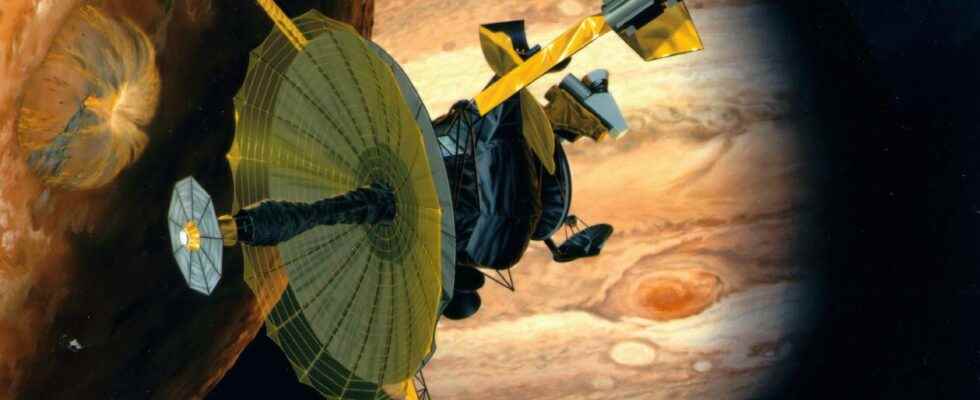Gravitational assistance is a technique using the attraction of planets to give extra speed to an interplanetary probe. We also speak of the gravitational sling effect. This technique is now used for most interplanetary probes, in order to save fuel. Here’s why.
Gravity imposes many constraints making it difficult to travel in a straight line from one planet to another, unless you have a rocket engine exceptional. Indeed, to reach a given speed, for example that of liberation of a planet, it is necessary to spend fuel … to propel the fuel. For a given payload, it is necessary to be able to eject gas at the highest speeds possible if fuel is low. For the moment, we are still reduced to making travel masses not very important according to well-defined trajectories when we want to visit a planet of the Solar System.
Fortunately, there is a strategy for traveling from one planet to another while saving fuel:gravitational assistance. It consists in bringing a probe into what is called Hill’s sphere (named after its discoverer, the mathematician and astronomer George hill), also called the Roche sphere (named after the French mathematician and astronomer Édouard Roche). This sphere of gravitational influence of a celestial body, which should not be confused with the Roche limit, defines a region in which another celestial body tends to naturally remain a satellite of the first despite the gravitational influence of ‘a third body. The Earth therefore has a Hill sphere with respect to the Sun in which is the Moon, and it is the same for the Moon itself in relation to the Earth and the Sun, as well as for other planets like Jupiter and Venus.
When a probe enters a Hill sphere with sufficient speed not to stay there, its speed increases like a ball falling into a bowl before decreasing at the exit of the bowl. One might think that the results are zero, but due to the movement of the planet with a Hill sphere, it becomes possible to borrow part of the cinematic moment orbital of the planet to give the probe an extra boost if you do it right. By passing from planet to planet, a probe can therefore accelerate to reach considerable speeds without using fuel and cover distances much faster.
Gravitational assistance and the exploration of the Solar System
The idea of using the gravitational influence of a planet to change the speed of a spacecraft dates back to the 1920s with the work of Ukrainian mathematician Yuri Kondratyuk. We also owe him the meeting in orbit lunar (LOR, lunar orbit rendezvous) which is the name of the mission scenario that was followed by the space program Apollo to send men to the moon. But he’s the American mathematician Michael minovich who will really grasp the full scope of the idea of gravitational assist of a planet in 1961, namely the possibility of reducing the fuel consumption necessary for rapid interplanetary travel.
The Nasa will put this concept into practice for the first time with the probe Marinate 10, who will use Venus on February 5, 1974 to reach Mercury on March 16, 1974. This was the first interplanetary flight using gravitational assistance, but the technique had nevertheless already been used during the flight of the Russian probe Luna 3 in 1959. Mercury will not be visited again until 33 years later, by the probe Messenger January 14, 2008.
The Mariner 11 and 12 probes did not see the light of day due to budget cuts. Rather than continuing to explore the Inner Solar System, the Nasa used the work already underway for a much more ambitious project. This is how the probes were born Traveling 1 and Traveling 2, as well as the project of a “Grand Tour” of the Solar System in the direction of the outer planets. It is the engineer Gary Flandro who realized in 1964 that the work of Minovitch, his colleague from NASA, made it possible to envisage this Grand Tour in less than ten years, which seemed impossible given the technology of the time.
Since then, the gravitational assistance of a planet has been put to good use by other missions, such as that of the Cassini-Huygens probe which has used it on several occasions to achieve Saturn. It changed its speed first by passing twice close to Venus, then to Earth and finally to Jupiter. We can also cite the examples of probes Rosetta and New Horizon.
You will also be interested
Interested in what you just read?
.
fs4
